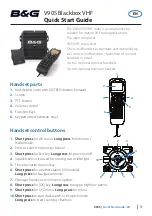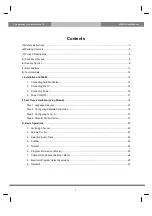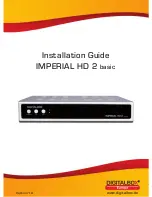
3-3
3
INSTALLATION AND CONNECTIONS
■
Connecting antenna
For radio communications, the antenna is of critical
importance, along with the output power and receiver
sensitivity. Select antennas, such as a well-matched
50
Ω
antenna, and feedline.
If you use only one antenna, connect it to the [ANT1]
connector.
CAUTION:
Protect your transceiver from light-
ning by using a lightning arrestor.
■
Main dial attachment
The
Main dial
is shipped unattached to the transceiver
to prevent possible damage to the dial shaft or rotary
encoder during shipping. Please attach the dial as de-
scribed below.
q
Slide the dial brake adjustment to the right posi-
tion.
• The dial brakes move inward as shown.
w
Insert the
Main dial
set-screw into the screw hole of
the
Main dial
, then tighten the screw until the screw
extends into the shaft hole out slightly using sup-
plied hexagonal wrench (2 mm).
• Be careful that the screw does not extend out more than
1 mm (0.04 in).
e
Attach the
Main dial
as illustrated.
• Be careful to match the correct orientation of the flat
face of the shaft and the screw hole of the dial knob.
r
Tighten the screw using supplied hexagonal wrench
as illustrated.
t
Install the rubber cover to the
Main dial
little by lit-
tle.
• Be careful to match the correct position of the convex
part of the rubber cover and the concave part of the dial
knob.
• Never install the rubber cover on the
Main dial
by force.
This may cause damage to the dial shaft or rotary en-
coder.
Dial brake adjusting lever
q
Dial brake
w
Less than 1 mm (0.04 in)
set-screw
Screw hole
Shaft hole
e
r
t
















































